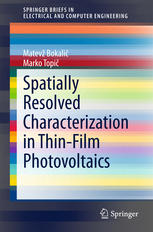

Most ebook files are in PDF format, so you can easily read them using various software such as Foxit Reader or directly on the Google Chrome browser.
Some ebook files are released by publishers in other formats such as .awz, .mobi, .epub, .fb2, etc. You may need to install specific software to read these formats on mobile/PC, such as Calibre.
Please read the tutorial at this link: https://ebookbell.com/faq
We offer FREE conversion to the popular formats you request; however, this may take some time. Therefore, right after payment, please email us, and we will try to provide the service as quickly as possible.
For some exceptional file formats or broken links (if any), please refrain from opening any disputes. Instead, email us first, and we will try to assist within a maximum of 6 hours.
EbookBell Team

0.0
0 reviewsThe book is devoted to the spatial characterization of solar cells and PV modules. It is written both as a monograph as well as a succinct guide for the state-of-the-art spatial characterization techniques and approaches. Amongst the approaches discussed are visual imaging, electro- and photo-luminescence imaging, thermography, and light beam induced mapping techniques. Emphasis is given on the luminescence image acquisition and interpretation due to its great potential. Characterization techniques are accompanied by simulation tools.
The contents are aimed at a readership of students and senior researchers in R&D as well as engineers in industry who are newcomers to the spatial characterization of either solar cells or PV modules. The concepts and approaches presented herein are based on but not limited to case studies of real thin-film PV devices.
Key features:
Review of spatially resolved characterization techniques and accompanying SPICE simulations in photovoltaics
Use of spatially resolved characterization techniques and their combinations for the identification of inhomogeneities in small area CdTe and dye-sensitized solar cells
Case studies of electroluminescence imaging of commercial PV modules (c-Si, CIGS, CdTe, a-Si, tandem and triple junction thin-film-Si)
The contents are aimed at a readership of students and senior researchers in R&D as well as engineers in industry who are newcomers to the spatial characterization of either solar cells or PV modules. The concepts and approaches presented herein are based on but not limited to case studies of real thin-film PV devices.
Key features:
Review of spatially resolved characterization techniques and accompanying SPICE simulations in photovoltaics
Use of spatially resolved characterization techniques and their combinations for the identification of inhomogeneities in small area CdTe and dye-sensitized solar cells
Case studies of electroluminescence imaging of commercial PV modules (c-Si, CIGS, CdTe, a-Si, tandem and triple junction thin-film-Si)